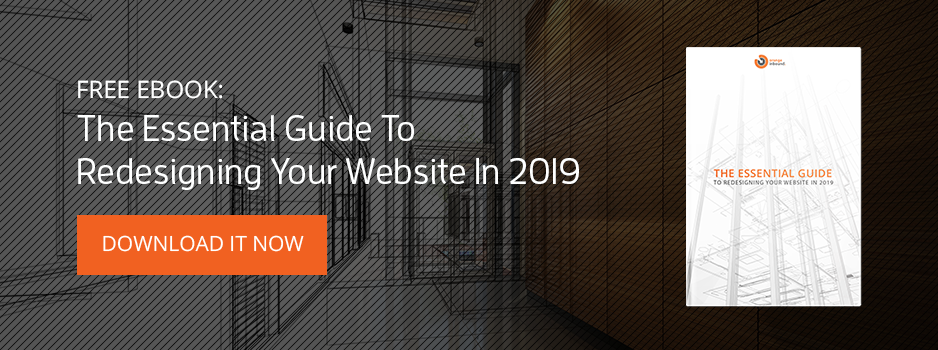Did you know that landing pages play a huge role in progressing your building materials business online? Simply sending visitors to your website can result in missed opportunities to capture leads and boost your sales funnel. Since growing your subscriber list positions you for revenue and repeat sales, it’s vital to have as many tools working for you towards achieving this goal.
Landing pages are a valuable tool for getting the job done! They help you convert traffic into qualified leads. In fact, companies see a whopping 55% increase in leads when boosting their number of landing pages from 10 to 15 (Source: Smart Insights). Its one sole purpose is to capture visitor’s contact information for your email list.
In this guide, we’ll provide an overview of exactly what a landing page is, why they’re important to your building materials brand, and how you can leverage them in your inbound marketing to improve online results.
What is a Landing Page?
When a prospect clicks on your call-to-action (CTA) link (whether from your website, social media post, or PPC ad), they should be directed to a landing page. These webpages are specially designed to collect contact information (usually name, email, and other related fields) by completing a form in exchange for a free content or discount offer.
Once the fields on the form have been completed and submitted, this visitor converts into a lead where you now begin the nurturing process of moving them through your sales funnel towards becoming a buying customer. Building your leads list is the lifeline of your business and landing pages are the primary tool to help you achieve this objective.
Content on landing pages should only relate to the lead offer (or lead magnet) that will be delivered to your visitor’s inbox. It’s targeted and specific to keep the interaction pointed at making the conversion.
Examples of lead magnets include:
- eGuide or Report
- Resource list
- eBook or Whitepaper
- Discount coupon
- Checklist
- Video series access
- Free consultation
- Free product samples
- Notification of a future product launch
Landing pages are designed to be simple and clear. The only content that makes up these pages include the form, offer given, and the design of the page itself (images, background, etc.).
Why Landing Pages Are Important for Your Building Materials Company
Here are several reasons why landing pages are important to your business:
1. Landing pages improve SEO. If you’re looking for ways to bolster your ranking in local search, creating landing pages that feature very localized content is a great way to increase visibility.
2. Building different landing pages that speak to different markets (or your various buyer personas) will increase conversion rates. You can personalize these pages based on where they originated from. For example, if you featured a landing page on Facebook, tailor the content so it relates to your followers for increased engagement.
3. Increase digital real estate that promotes your brand by having multiple landing pages specific to your products and offers.
Essential Elements of a Winning Landing Page
As mentioned, landing pages are meant to be simple and straightforward. The following illustrates how to create a building materials landing page that is optimized for conversions.
- Strong headline – It’s the first thing a visitor sees, so addressing a specific point that is related to the content will catch attention versus a vague headline
- Succinct copy - Keep your message brief, highlighting the benefits visitors will gain as a result of opting in. Bullet points are a great way to mentioning the advantages of downloading your offer
- Compelling CTA - Tell visitors exactly what to do in your call-to-action. Use big, bright buttons that stand out and are placed above the fold on your page (viewers shouldn’t have to scroll to click on the button)
- Avoid added links - Remember, the focus is the opt-in
- Leverage images - Including video on a landing page can increase conversion by 80% (Source: HubSpot)
- Use trust indicators - Include trust emblems like guarantee seals and customer testimonials to build trust with your audience
Test and Tweak for Improved Results
It’s important to test your results to discover which landing pages are converting well so you can focus more on promoting that particular page and similar content. Testing and measuring will be a key component to your inbound marketing success.
Therefore, run A/B tests where a baseline control sample (landing page A) is compared to a variety of single-variable test samples (landing page B) to improve response rates. Tweak your copy to see what resonates better with your audience. Test between different visuals to measure engagement levels. Try multiple CTAs and buttons. Over time, you will craft the perfect landing page that converts best for your market.
Landing pages are vital to your lead generation strategy. Use this guide to begin creating compelling pages to boost conversions and grow your brand.

